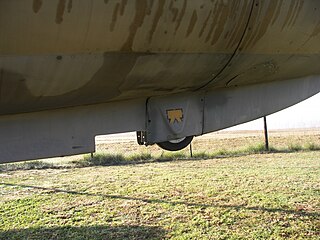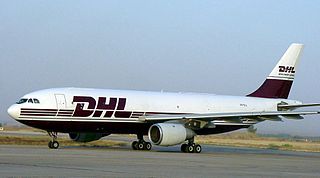
The Airbus A340 is a long-range, wide-body passenger airliner that was developed and produced by Airbus. In the mid-1970s, Airbus conceived several derivatives of the A300, its first airliner, and developed the A340 quadjet in parallel with the A330 twinjet. In June 1987, Airbus launched both designs with their first orders and the A340-300 took its maiden flight on 25 October 1991. It was certified along with the A340-200 on 22 December 1992 and both versions entered service in March 1993 with launch customers Lufthansa and Air France. The larger A340-500/600 were launched on 8 December 1997; the A340-600 flew for the first time on 23 April 2001 and entered service on 1 August 2002.

The Airbus A330 is a wide-body aircraft developed and produced by Airbus. Airbus conceived several derivatives of the A300, its first airliner from the mid-1970s. Then the company began development on the A330 twinjet in parallel with the A340 quadjet and launched both designs with their first orders in June 1987. The A330-300, the first variant, took its maiden flight in November 1992 and entered service with Air Inter in January 1994. The slightly shorter A330-200 variant followed in 1998.

Moorabbin Airport is a mostly general aviation airport for light aircraft located in between the southern Melbourne suburbs of Heatherton, Cheltenham, Dingley Village and Mentone. It also receives commercial airline service. The airport grounds are treated as their own suburb, and share the postcode 3194 with the neighbouring suburb of Mentone. With a total of 274,082 aircraft movements, Moorabbin Airport was the second busiest airport in Australia for the calendar year 2011.

Avalon Airport is a domestic airport, located in Avalon in the City of Greater Geelong in Victoria, Australia. While located outside the Melbourne metropolitan area, it is the second busiest of the four airports serving the state capital in passenger traffic. It is located 15 km (9 mi) north-east of the Geelong CBD and 50 kilometres (31 mi) south-west of the Melbourne CBD. The airport is operated by Avalon Airport Australia Pty Ltd, a subsidiary of Linfox.

Air France Flight 358 was a regularly scheduled international flight from Charles de Gaulle Airport in Paris, France, to Toronto Pearson International Airport in Ontario, Canada. On the afternoon of 2 August 2005, while landing at Pearson airport, the Airbus A340-313E operating the route overran the runway and crashed into nearby Etobicoke Creek, approximately 300 m (980 ft) beyond the end of the runway. All 309 passengers and crew on board the Airbus survived, but twelve people sustained serious injuries. The accident highlighted the vital role played by highly trained flight attendants during an emergency.

In aviation, a tailstrike or tail strike occurs when the tail or empennage of an aircraft strikes the ground or other stationary object. This can happen with a fixed-wing aircraft with tricycle undercarriage, in both takeoff where the pilot rotates the nose up too rapidly, or in landing where the pilot raises the nose too sharply during final approach, often in attempting to land too near the runway threshold. It can also happen during helicopter operations close to the ground, when the tail inadvertently strikes an obstacle.

On 22 November 2003, shortly after takeoff from Baghdad, Iraq, an Airbus A300B2-200F cargo plane, registered OO-DLL and owned by the Belgian division of European Air Transport, was struck on the left wing by a surface-to-air missile while on a scheduled flight to Muharraq, Bahrain. Severe wing damage resulted in a fire and complete loss of hydraulic flight control systems. Because outboard left wing fuel tank 1A was full at takeoff, no fuel-air vapour explosion occurred. Liquid jet fuel dropped away as 1A disintegrated. Inboard fuel tank 1 was pierced and leaking.
An Air Data Inertial Reference Unit (ADIRU) is a key component of the integrated Air Data Inertial Reference System (ADIRS), which supplies air data and inertial reference information to the pilots' electronic flight instrument system displays as well as other systems on the aircraft such as the engines, autopilot, aircraft flight control system and landing gear systems. An ADIRU acts as a single, fault tolerant source of navigational data for both pilots of an aircraft. It may be complemented by a secondary attitude air data reference unit (SAARU), as in the Boeing 777 design.
Skytraders is an Australian airline. It is headquartered at 180 Jersey Road, Woollahra, New South Wales, Australia. Skytraders was founded in 1979. It is the provider of specialist air services to the Australian Federal Government.

Qantas Flight 72 (QF72) was a scheduled flight from Singapore Changi Airport to Perth Airport by an Airbus A330. On 7 October 2008, the flight made an emergency landing at Learmonth Airport near the town of Exmouth, Western Australia, following an inflight accident that included a pair of sudden, uncommanded pitch-down manoeuvres that caused severe injuries—including fractures, lacerations and spinal injuries—to several of the passengers and crew. At Learmonth, the plane was met by the Royal Flying Doctor Service of Australia and CareFlight. Fourteen people were airlifted to Perth for hospitalisation, with 39 others also attending hospital. In all, one crew member and 11 passengers suffered serious injuries, while eight crew and 99 passengers suffered minor injuries. The Australian Transport Safety Bureau (ATSB) investigation found a fault with one of the aircraft's three air data inertial reference units (ADIRUs) and a previously unknown software design limitation of the Airbus A330's fly-by-wire flight control primary computer (FCPC).
Air France has been in operation since 1933. Its aircraft have been involved in a number of major accidents and incidents. The deadliest accident of the airline occurred on June 1, 2009, when Air France Flight 447, an Airbus A330-203, flying from Rio de Janeiro to Paris crashed into the Atlantic Ocean with 228 fatalities. A selected list of the most noteworthy of these events is given below.

Qantas Flight 32 was a regularly scheduled passenger flight from London to Sydney via Singapore. On 4 November 2010, the aircraft operating the route, an Airbus A380, suffered an uncontained failure in one of its four Rolls-Royce Trent 900 engines. The failure occurred over the Riau Islands, Indonesia, four minutes after takeoff from Singapore Changi Airport. After holding for almost two hours to assess the situation, the aircraft made a successful emergency landing at Changi. No injuries occurred to the passengers, crew, or people on the ground, despite debris from the aircraft falling onto houses in Batam.

Caloundra Airport is a public general aviation airport located in Caloundra West serving the Sunshine Coast in the Australian state of Queensland. The airport is located on a 130 ha site, of which 74 ha is occupied by the current facilities. Further growth and expansion of the airport is limited by urban encroachment as much of the surrounding land has been developed into residential estates. The airport has been managed by Sunshine Coast Airports, a business unit of the Sunshine Coast Regional Council which is also responsible for the operations of the Sunshine Coast Airport at Maroochydore since 2008.
Borroloola Airport is an airport located approximately 1.5 km (0.93 mi) south of Borroloola in the Northern Territory, Australia.

Emirates Flight 521 (EK521/UAE521) was a scheduled international passenger flight from Thiruvananthapuram, India, to Dubai, United Arab Emirates, operated by Emirates using a Boeing 777-300. On 3 August 2016 the aircraft, carrying 282 passengers and 18 crew, crashed while landing at Dubai International Airport.

On July 7, 2017, an Airbus A320-211 operating as Air Canada Flight 759 was nearly involved in an accident at San Francisco International Airport in San Mateo County, California, United States. The flight, which originated at Toronto Pearson International Airport, had been cleared by air traffic control to land on runway 28R and was on final approach to land on that runway; however, instead of lining up with the runway, the aircraft had lined up with the parallel taxiway, on which four fully loaded and fueled passenger airplanes were stopped awaiting takeoff clearance. The flight crew initiated a go-around prior to landing, after which it landed on 28R without further incident. The aircraft on the taxiway departed for their intended destinations without further incident. The subsequent investigation by the National Transportation Safety Board (NTSB) determined that the Air Canada airplane descended to 59 feet (18 m) above the ground before it began its climb, and that it missed colliding with one of the aircraft on the taxiway by 14 feet (4.3 m).

Bek Air Flight 2100 was a domestic passenger flight from Almaty to Nur-Sultan, Kazakhstan, operated by a Fokker 100 that crashed on 27 December 2019 while taking off from Almaty International Airport. Of the 98 people on board – 93 passengers and five crew, 13 died in the crash and 66 were injured. The Kazakhstani government started investigations on the same day.

The 1994 South Pacific Airmotive DC-3 crash took place on 24 April 1994, when a Douglas DC-3 airliner operated by South Pacific Airmotive, tail number VH-EDC, ditched into Botany Bay shortly after takeoff from Sydney Airport in Sydney, New South Wales, Australia. The cause of the crash was determined by the Bureau of Air Safety Investigation to have been a power loss in the aircraft's left engine caused by an inlet valve being stuck in the open position, compounded by inadequate action on the part of the pilots; Rod Lovell, the pilot in command of the flight, has disputed BASI's conclusions.














